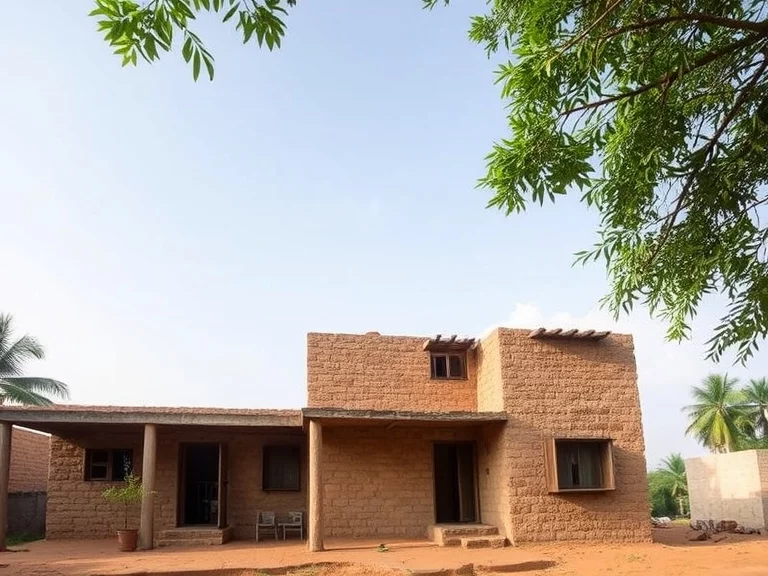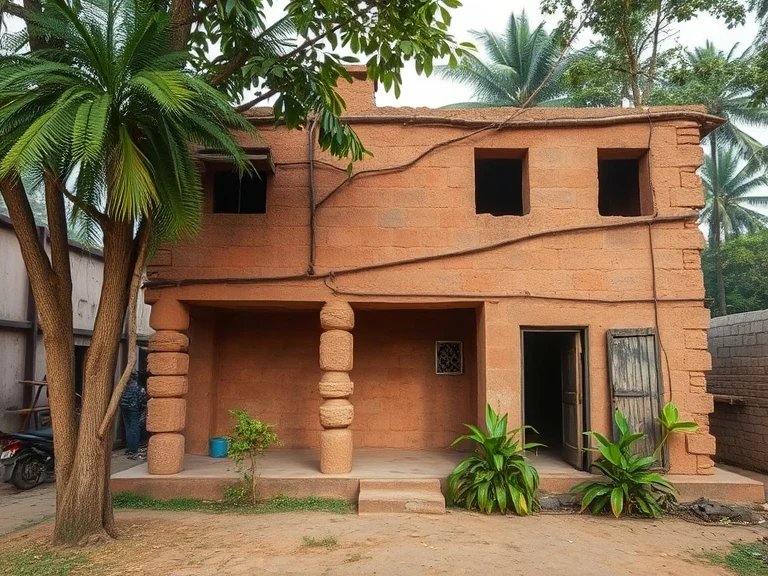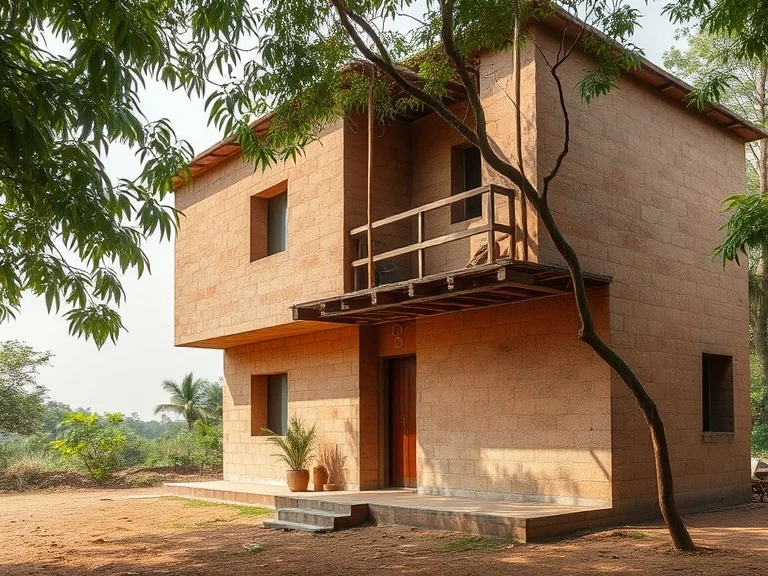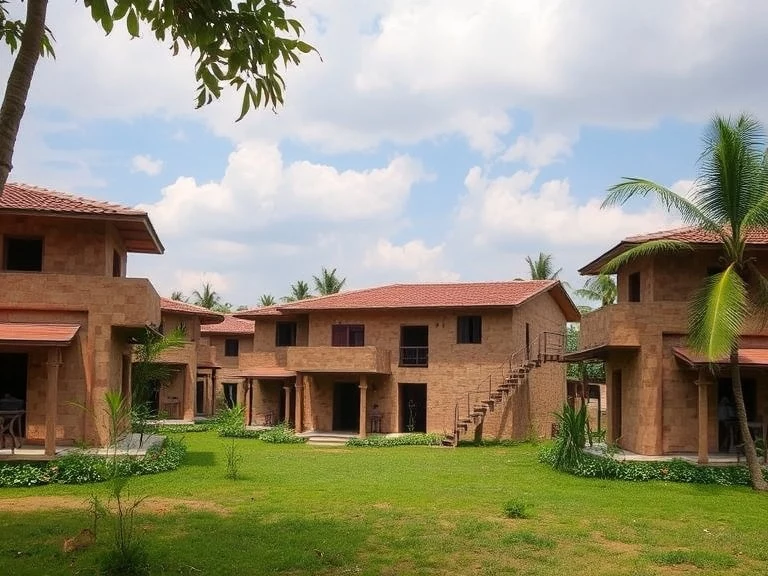Affordable housing in India is one of the most pressing issues of our time, with the government and private sector grappling to meet the demands of a rapidly urbanizing population. While the focus on affordability often drives the architectural discourse, a less-explored yet deeply relevant aspect is the materiality of these structures. The materials used in affordable housing are often a direct reflection of both the economic constraints and the societal attitudes toward poverty and progress. These materials, often considered ‘unpolished’ or ‘raw’, tell stories not only about the buildings themselves but also about the people who inhabit them and the broader socio-economic and cultural context in which these homes are created.

The Value of ‘Unpolished’ Materials
In the context of affordable housing, the term ‘unpolished’ is not necessarily derogatory. Rather, it refers to the use of raw, unfinished, or non-luxurious materials that challenge conventional ideas of what a home should look like. Materials such as exposed brick, concrete, corrugated metal, and even bamboo or compressed earth blocks have been used increasingly in affordable housing projects across India. These materials, often dismissed as low-cost or temporary solutions, can provide a deeper understanding of both the constraints and possibilities of affordable architecture.
These materials are frequently associated with resilience and adaptability. For example, concrete, which may be seen as rough and unfinished in its raw form, is incredibly durable and low-maintenance—traits that are vital for housing in India’s diverse climate and for low-income communities who may not have the means for regular upkeep. Similarly, exposed brick or stone, while lacking the refined finish of polished surfaces, can create a sense of permanence and grounding, offering both aesthetic appeal and cultural relevance. Materials that are ‘unpolished’ or raw also often embody the cultural history of the region, referencing traditional forms of construction that were once ubiquitous but have been largely displaced by modern building materials.

The Role of Sustainability and Local Resources
Affordable housing projects in India face enormous challenges, particularly regarding sustainability. One of the key advantages of using exposed or unpolished materials is that many of them can be sourced locally, reducing transportation costs and environmental impact. For instance, compressed earth blocks (CEBs), often produced from locally available soil, can be an environmentally sustainable alternative to conventional bricks and cement. Similarly, the use of bamboo—one of the most renewable building materials in the world—has gained traction in eco-friendly housing projects, particularly in rural and semi-urban areas.
Incorporating locally available materials also creates an opportunity for cultural continuity and empowerment. By using indigenous materials and traditional building techniques, these projects not only reduce the carbon footprint but also offer economic opportunities for local artisans and craftsmen. This can foster a sense of pride and ownership within the community, as well as provide livelihoods that support the local economy. For example, communities in regions such as Kerala have revived the use of laterite stone in affordable housing projects, combining modern architectural practices with centuries-old construction methods.
Cultural Identity and ‘Raw’ Aesthetics
The aesthetic value of exposed materials in affordable housing should not be overlooked. While polished marble and glossy facades may dominate the higher-end real estate market, there is an inherent beauty in the roughness of materials like stone, concrete, and exposed brick. These materials, far from being crude or unsightly, often evoke a sense of authenticity, grounding the building in its environment and cultural context. In fact, the use of ‘unpolished’ materials in Indian architecture is often deeply tied to the country’s cultural identity. Many traditional Indian homes, particularly in rural areas, have always used locally available materials such as mud, stone, and wood. The resurgence of these materials in affordable housing represents a reconnection with roots, offering a form of architecture that is both modern and historically resonant.
The unrefined quality of these materials also speaks to a broader narrative around class and development. In a country where architectural beauty is often equated with luxury and wealth, the ‘raw’ or ‘unfinished’ aesthetic of affordable housing challenges this assumption. By showcasing exposed materials, these projects tell a different story—one that values function over form, community over extravagance, and sustainability over excess. In this way, the materials themselves become symbols of a more inclusive form of development, one that recognizes the dignity of people living in poverty and celebrates their right to well-designed, sustainable, and culturally appropriate homes.

Challenges and Perceptions
Despite the advantages of using exposed or unpolished materials, there are challenges to their widespread adoption. The stigma associated with poverty and low-cost housing often extends to the materials used in these projects. There is an ingrained belief in Indian society that a beautiful home should be built with polished surfaces, high-end finishes, and materials that are perceived as luxurious. In this context, the roughness of concrete, the unfinished look of exposed brick, or the natural texture of bamboo or mud can be seen as inferior. This perception can hinder the acceptance of these materials by both developers and the public.
Furthermore, while these materials can be sustainable and cost-effective, their use requires a level of expertise in design and construction. Local builders may need training to work with alternative materials such as compressed earth blocks or bamboo in a structurally sound and aesthetically pleasing way. Additionally, there can be resistance from developers and government bodies who prioritize speed and cost over long-term sustainability.
Reimagining Affordable Housing
In conclusion, exposed materials in Indian affordable housing are not just a matter of cost-efficiency—they are an integral part of a broader narrative of sustainability, cultural identity, and social justice. These materials are unpolished not in their quality but in their ability to challenge conventional expectations about what housing should be. They tell a story of resilience and creativity, of making do with what is available, and of reimagining what a home can be.
By embracing these ‘raw’ materials, we open up new possibilities for affordable housing in India—ones that are not just economically feasible but also environmentally sustainable, culturally resonant, and socially empowering. The materials may be exposed, but the narratives they tell are rich, complex, and worthy of recognition.









